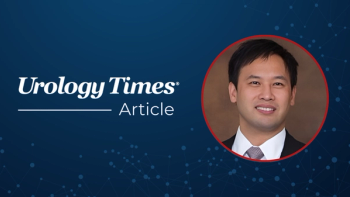
Residency funding urgently needed to address work force shortage
"State funding for GME is becoming increasingly important in the absence of significant movement from the federal government," writes the AACU's Ross E. Weber.
Based on a partnership with Urology Times, articles from the American Association of Clinical Urologists (AACU) provide updates on legislative processes and issues affecting urologists. We welcome your comments and suggestions. Contact the AACU government affairs office at 847-517-1050 or
Additional public funding for graduate medical education (GME) is a key component of any solution to the escalating health care work force crisis. Delegating responsibilities to nonphysician providers and telemedicine can only get us so far. Electronic health records have created more headaches than efficiencies. Augmented intelligence is slowly entering the picture but remains decades away from widespread adoption.
Unfortunately, the biggest source of public dollars remains frozen in time. Medicare's GME formula hasn't changed since 1997. Changes in the distribution of our population haven't been accounted for in this program, thus creating an unequal allocation of residency positions across the country. Over the years, federal policymakers nipped at the edges of the funding problem via discretionary appropriations to other agencies (eg, Health Resources & Services Administration, Veterans Health Administration, Department of Defense). State governments, too, have increased support of graduate medical education, but a few dozen slots here and there will not train a sufficient number of doctors to keep up with retirements and the health care needs of aging baby boomers.
A bipartisan bill garnering widespread support,
Also from the AACU:
In announcing co-sponsorship of the Senate version, Minority Leader Chuck Schumer (D-NY) insisted that the bill tackles the problem head-on by "…prioritizing those slots for communities [and specialties] that need them most. I'll fight tooth and nail to see that this critical legislation passes the Senate and is signed into law..." With or without Sen. Schumer's strenuous effort, few observers expect the bill to garner serious attention. An analytics engine estimates either version has about a 3% chance of becoming law.
Less substantive attempts to address the crisis abound at both the federal and state levels, from tweaking the total number of publicly funded positions to forgiving medical school debt. In Congress, Reps. Ron Kind (D-WI) and Mike Gallagher (R-WI) introduced the Advancing Medical Resident Training in Community Hospitals Act of 2019 (
This bill is slowly progressing through the legislative process, having been unanimously passed by the House Ways and Means Committee in late June.
Next:
Other notable results from the AAMC 2018 50-State Survey include:
- Medicaid continues to be a major source of funding for GME. In 2018, the overall level of support for GME continued to grow, reaching $5.58 billion. This represents a nearly 50% increase since 2009, when Medicaid GME support totaled $3.78 billion.
- In 2018, the proportion of Medicaid GME payments made under managed care (52%) continued to exceed the proportion of such payments made under fee for service (48%), a trend that began in 2015.
- Although teaching hospitals are the predominant recipients of Medicaid GME support, medical schools in three states, ambulatory care centers in two states, and individual teaching physicians in five states also received GME payments in 2018.
Read:
Building on this foundation, legislators across the country took progressive steps toward funding physician training in 2019. In Arizona, after failing to fund the state's Graduate Medical Education Program for nearly 10 years, the state budget included about $10 million for rural residencies and another $8 million for physician training in urban areas. Lawmakers in New Mexico, where the Human Services Department currently spends over $20 million to support GME, added a new grant that gives special priority to applications that offer new residency programs, train designated specialties that have shortages, or propose positions in underserved areas. New Mexico Secretary of Human Services David Scrase, MD,
In neighboring Texas, 60% of the state’s medical school graduates remain in the state to practice. That percentage bumps up to 80% when an individual stays in Texas for both med school and residency. The Texas legislature recognizes the desirability of preventing “brain drain” in this way, as evidenced by a landmark 2015 law to create a permanent fund for GME. In 2019, legislators approved an additional $60 million dollars for that program.
California’s support for residency programs was increased in an unconventional, though very “Californian,” way. In 2016, voters approved Proposition 56, a ballot initiative that created CalMedForce. The foundation selected to administer that program, Physicians for a Healthy California, announced its first awards in February 2019. In the program’s first application cycle, 73 programs received awards, representing 156 residency slots in programs from across the state.
As is the case with public policies that routinely affect urologists’ patients, practice, and profession, one must keep a watchful eye on the activities of elected officials, not only in Washington but the 50 state capitals as well. State medical associations and specialty societies including the AACU collectively represent physicians’ interests and amplify the physician’s voice. None of this can be accomplished, however, without support via membership and participation in advocacy campaigns. Absent this kind of engagement, organizations representing nonphysician providers will offer to fill the void.
Take action today to ensure patient safety tomorrow.
Newsletter
Stay current with the latest urology news and practice-changing insights — sign up now for the essential updates every urologist needs.



















